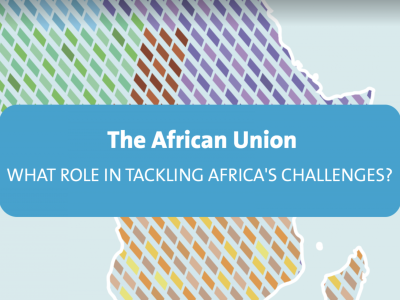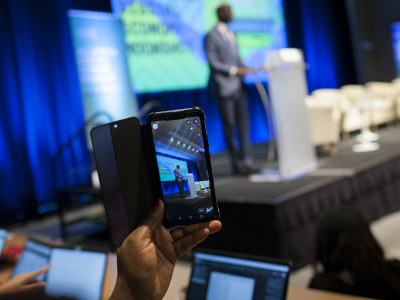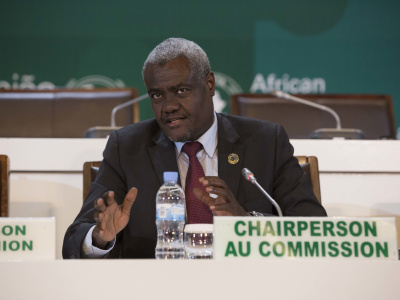
The reform engine of the African Union has started - Over to Egypt to keep it running
Two years ago, Rwandan President Paul Kagame kickstarted reforms to the African Union. As he hands over the chair to his Egyptian successor el-Sisi, many wonder what will happen to this reform agenda. Unlike previous rounds of AU reforms, there is a fair chance that parts of the reform agenda will continue to be pursued.
Look under the hood
With 55 member countries, an elaborate institutional architecture, an impressive agenda – including everything from tackling child marriage, dealing with climate change, silencing the guns and mounting peace operations – and a high dependency rate on its main donors, the African Union is probably the world’s largest and most complex regional organisation. Since its establishment in 2002, the continental organisation has gone through a few reform cycles, with limited effect.
But exactly two years ago, an African team of experts led by President Kagame produced fifteen of the AU’s punchiest pages with a sobering diagnosis of problems. The AU is a ‘dysfunctional organisation in which member states see limited value, global partners find little credibility and our citizens have no trust’. That was just one of the punches from the team of high-flyers. The report also contained recommendations to make the AU ‘fit for purpose’. The highest AU body endorsed them all.
The Kagame report looked critically into the mirror as well as under the hood of the continental machinery, at the engine of the AU Commission – the bureaucracy, the organisational systems, the governance and rules of the game that are intended to steer the relations with member states. It also dealt with the overloaded AU agenda, the relations with numerous sub-regional organisations and the eleven AU bodies or “organs” that constitute the African Union.
But this time around, there seems to be a stronger sense of urgency to implement parts of the reform agenda. So what is so different, and what is at stake?
The deep financial crisis of the AU in 2016, offers one plausible explanation. But Kagame’s continental charisma and no-nonsense approach also played a role. Though not entirely clear whether he pushed, facilitated or just happened to step into the driver’s’ seat at the right time, he pointed out that two unreliable sources of funding – from African member states and from external funders – create a money problem for the AU. But he also underlined a deeper problem of governance dysfunctions and of getting the “right mindsets” first to subsequently solve the money problem. The reforms therefore targeted transparency and accountability failures, limited managerial capacity, inefficient working methods and general lack of a sense of ownership over the ever-expanding agenda, and more.
President Kagame, who handed the AU chairmanship over to the Egyptian President el-Sisi at the current AU summit, already has a number of achievements to point to. Last year, we took a closer look at some of his reforms of the AU machinery, as briefly discussed below and in more detail in this paper. We interviewed key actors, stakeholders and international partners in Addis Ababa, the headquarters of the AU.
One important measure on the money side was to impose a 0.2% levy on eligible imported goods into the continent. By the end of 2018, half of the member states complied with this system. This meant, among other things, that for the first time member states have put some money in the AU Peace Fund, enabling the continental body to kickstart emergency actions without having to wait for donors to foot the initial costs. The AU Commission also took actions to make the management of the budgeting and finance systems more transparent, the reporting towards main stakeholders – African and external partners – more responsive, the budget planning and spending more disciplined, and the management of personnel more results oriented. For the first time, the AU put the reports of its external auditors online by the end of last year. And for the first time, the AU presented a reduced budget for 2019 after a much stricter and participatory budget process, which included a critical reading of the persistent gaps between much higher income than spending. Pushing for higher budgets does not solve the underlying lack of absorption capacity.
Fixing the engine
These step-by-step actions may seem somewhat dull when compared with the touted ambitions or the high-end goals presented in the AU’s long term Agenda 2063. However, when African actors or stakeholders take an active interest in solving such down to earth problems, they move from rhetoric to action. Such actions may lead to re-adjustments as they learn by doing, the type of iterative adaptations that are so essential for developing capabilities and fuelling institutional reforms over time.
But there are two types of uncertainties with such slow-burning reforms. One is about how AU member states will respond if they perceive them as too little, too slow. Other uncertainties relate to how donors – still the largest source of AU funding – will react: will they continue, adapt or divert their support to the AU? Unpredictable, earmarked and fragmented aid by almost thirty old and new donors have hampered the AU Commission to develop those capabilities that are supportive of African owned problem solving in regional matters.
On both sides of the partnership, there are misgivings. On the one hand, the AU Commission and African stakeholders criticise the intrusiveness of external partners, and the extra burden that fragmented aid imposed on overburdened bureaucrats in the AU. Donors, on the other hand, complain about the flaws in financial management, poor reporting by the AU Commission and a lack of commitment at different levels to act on continental agreements.
Nonetheless, an important minority of external partners of the AU, has taken an active interest in the institutional engine under the hood. Some ten years ago, the AU Commission asked these donors to harmonise their aid, reduce the administrative burden and help oil the bureaucratic wheels in the continental engine room. During our round of interviews in Addis Ababa, we were invited to a joint workshop between the AU and all its external partners for a stocktake exercise of these past efforts. This provided a platform for some open conversation about the experiences, tensions and flaws in the partnership and about the future direction of travel.
So yes, clearly there are collective action failures among donors. And only a relatively small portion of aid falls under the quality label of Joint Financing Arrangement. But a core group of donors was also prepared to invest in learning from past mistakes, and seek ways to improve cooperation that supports those AU reform efforts that reinforce the organisational and institutional horsepower under the hood.
Whereas in the past, the engine of reform sputtered immediately after their public announcements, this time around seems different, with reform rhetoric gradually turning into gradual, but real action. One question then is which reforms have enough momentum to continue. But above all, from partnership experiences thus far, the main lesson to retain is perhaps that institutional change takes not only money and the right mindsets, but also time.
The PEDRO discussion paper on ‘Financing the African Union – on mindsets and money’ deals in more detail with this part of the reform agenda, and how the AU Commission and a core group of donors explore common ground to adapt and improve partnership modalities.
The views expressed are those of the author and not necessarily those of ECDPM.




